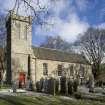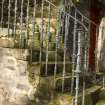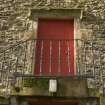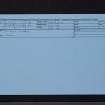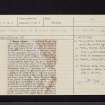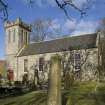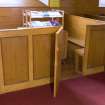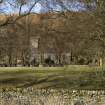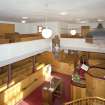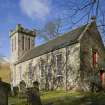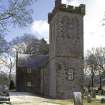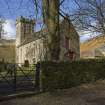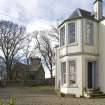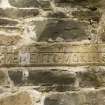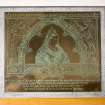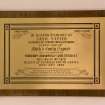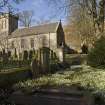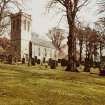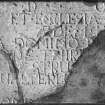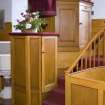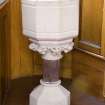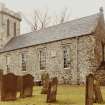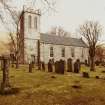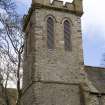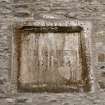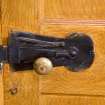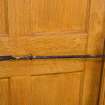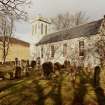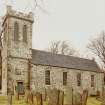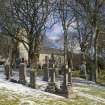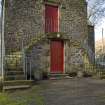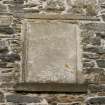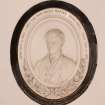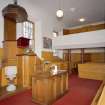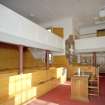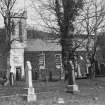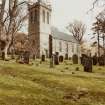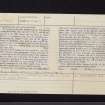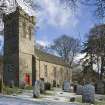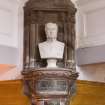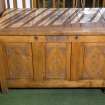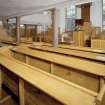Pricing Change
New pricing for orders of material from this site will come into place shortly. Charges for supply of digital images, digitisation on demand, prints and licensing will be altered.
Ettrick, Parish Church Of Ettrick And Buccleuch
Church (19th Century), War Memorial(S) (20th Century), War Memorial (19th Century)
Site Name Ettrick, Parish Church Of Ettrick And Buccleuch
Classification Church (19th Century), War Memorial(S) (20th Century), War Memorial (19th Century)
Alternative Name(s) Ettrick Kirk; New Kirk Of Ettrick: Lt B Napierwar War Memorial Plaque: War Memorial Roll Of Honour
Canmore ID 51184
Site Number NT21SE 2
NGR NT 25986 14506
Datum OSGB36 - NGR
Permalink http://canmore.org.uk/site/51184
- Council Scottish Borders, The
- Parish Ettrick
- Former Region Borders
- Former District Ettrick And Lauderdale
- Former County Selkirkshire
NT21SE 2.00 25986 14506
(NT 25981450) Church (NAT)
OS 6" map (1900)
NT21SE 2.01 Centred NT 25989 14488 Cemetery
NT21SE 2.02 NT c. 2598 1449 James Hogg's Grave
See also;
NT21SE 7 NT 26023 14539 Ettrick Manse
Ettrick Church. A "New Kirk of Ettrick" has existed since the beginning of the 16th century at latest, as it was noted about 1561 that the "Kirks of Wester and New of Ettrick" had paid no teinds since
Flodden, (OPS 1851, quoting "Book of Assumptions"), but it is impossible to date more closely the first appearance of a church on this site. The church built by Sir Robert Scott of Thirlstane, who lived from 1566 to 1627, (Scott 1118-1923) was thus presumably at least the second in the series of structures. The existing building dates from 1824, as is recorded by a panel on the tower, and it is of interest for its internal lay-out which perpetrates the typical post- Reformation plan of a "preaching kirk" (cf. RCAHMS 1957, 160)-the pulpit, with precentor's desk in front of it, being in the centre of the S. side and the pews facing inwards towards it from the E. and W. ends and from a deep N. aisle. Before the introduction of the present Communion table, boards were laid over the pews immediately in front of the pulpit to do duty for it on Communion Sundays. Over the W. end and the aisle there are galleries, reached by a stair in the tower, and over the E. end a laird's loft, reached by outside stairs which rise on either side of the E. entrance. The pulpit has a characteristic sounding-board with a dove for finial.
Two relics of the older periods remain. The first is a long thin stone, set in the S. wall of the church at the SE. corner and inscribed in raised letters S / R S MEMENTO MORI 1619. It evidently commemorates Sir Robert Scott, son of Sir Robert Scott of Thirlstane, who died in that year. (Retours) The second is part of an inscribed tablet of white freestone, reset in a wooden frame over the inside of the tower door. The lettering, which belongs to the turn of the 17th and 18th centuries, and corresponds closely with that of a tombstone in the churchyard dated 1709, suggests that the tablet was erected by Sir Francis Scott of Thirlestane, grandson of Walter and great-grandson of Robert, who died in 1712; though whether any specific statement to this effect appeared on this or any other similar stone must remain doubtful.
TOMBSTONES. The following stones of earlier date than 1707 were noted in the graveyard.
(1) A head- stone, now largely sunk in the ground, inscribed HERE LYES / MARGARET AL/ISON ELDEST DAVG/HTER TO GEORG WIL/SON TENNANT.... No date is visible above ground, but the lettering, which is incised, suggests the end of the 17th century.
(2) A very small headstone, the rounded shape of which is evidently natural, bearing the incised inscription W B I N / 1691. Small and naturally shaped headstones of this type, apparently glacial pebbles such as could have been obtained from the bed of the river, are numerous in this graveyard, but the remainder are uninscribed; the late Rev. Dr. Addison told the Commission's officer that they were brought from the older burial- ground at Over Kirkhope (RCAHMS 1957, No. 12), and that they were known locally as "bulls".
Two collection-ladles, believed to be of 18th- century date, are preserved in the manse.
RCAHMS 1957, visited 1952
(No. 12 - Burial Ground (? Md.) - Selkirk 17 SW 3)
This church is fully as described by RCAHMS. It is in use for public worship.
Visited by OS (WDJ) 4 July 1962
A new photographic survey of the Parish Church of Ettrick & Buccleuch was carried out in March 2009 through RCAHMS Threatened Building Survey programme, as the church is being considered for closure in the near future. The opportunity was taken to acquire archive images of the neighbouring Manse and Steading related to the Church, the monuments relating to James Hogg - The Ettrick Shepherd (who was born and buried in Ettrick), the Ettrick War Memorial and the Boston Memorial Hall in Ettrick village.
Visited by IA/STG November 2008, photographic survey March 2009.
Publication Account (1985)
A 'New Kirk of Ettrick' was built early in the 16th century, though the present church dates from 1824-a typical T-shaped, post-Reformation building. Internally it remains a 'preaching kirk'. The pulpit with its characteristic sounding board sunnounted by a dove,and the precentor's desk in front of it stand in the centre of the south side; the pews face inwards from the east and west sides and from a deep north aisle. Over the west end and the aisle there are galleries reached by a stair in the tower; and over the east end there is a laird's loft, reached by the outside stair rising either side of the east door. Before the present Table was introduced, on Communion Sundays boards were simply placed over the pews immediately in front of the pulpit.
There are a number ofinteresting stones in the church and churchyard. A small 17th century stone set in the south wall commemorates Sir Robert Scott of Thirlestane's son Robert who died in 1619; a white freestone tablet set inside the tower, in the wall above the door, suggests in Latin that one Waiter (perhaps Robert Scott's second son, of Gamescluch, died 1609) did something "for God, the Greatest and Best, and for the Church of Christ". Such use of a pagan Roman fonnula, turned to a Christian context, was a common literary device of the period, though unusual in Scottish inscriptions. The lettering is late 17th-early 18th century and similar to that of a 1709 stone in the churchyard. It may have been erected by Sir Francis Scott of Thirlestane, grandson of Waiter and greatgrandson of Robert; he died in 1712.
In the churchyard are a number of very small headstones, naturally-shaped and probably glaciallyrounded river boulders. They are said to have been brought from the Over Kirkhope burial ground and to have been known locally as 'bulls'. One is inscribed WBIN/1691.
Otherwise there are numerous 17th-18th century headstones, several connected with the life and family of James Hogg, 'The Ettrick Shepherd', born nearby. The writer himself (1770-1835) is buried here; also his mother Margaret Laidlaw, her father William Laidlaw ('Will o' Phaup'), her husband Robert Hogg and three more of their sons.
Much of the land at the confluence of the Tilme Water and the Ettrick Water is marshy and beset with scrub and thickets. It gives a fair impression of what many a valley bottom would have been like before proper draining!
Information from 'Exploring Scotland's Heritage: Lothian and Borders', (1985).
Sbc Note
Visibility: This is an upstanding building.
Information from Scottish Borders Council.


















































